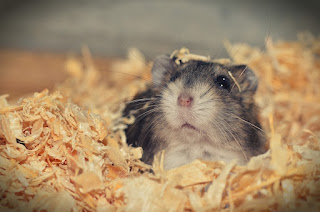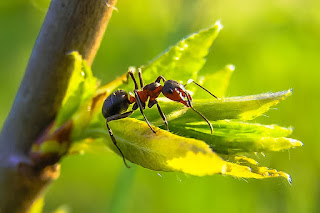I’m a Hamster
I’m a Hamster
I still live in the wild but my lucky friends that are domesticated live as family pets in loving homes.
For those of us that live in the wild we usually habitat in deserts, grasslands, farmlands, meadows, sandy areas, soil rich areas and steppes in warm climate conditions.
We are rodents that love to burrow into the ground similar to mice, rats, ferrets and badgers.
We build tunnels and caves for our shelter and to store our food in the wild.
Wild hamsters can be found in Europe and Asia.
In the wild, hamsters live solitary lives minding their own business to assure their survival as they search for food and shelter.
They eat insects, seeds, grasses, vegetation, nuts and fruits in the wild.
Hamsters communicate through body language and enjoy being treated well by their owners if they’re lucky enough to have one but they are not happy being held.
That’s how they differ from cats because many cats do like to be held when they know and trust their owners. Hamsters do not like being held despite their tiny size.
If you have a cat or dog as a family pet you must keep your pet hamster separated from the other pet animals to assure their safety and you must keep your pet hamster in a protective cage in a separate room that the other pet animals do not have access to.
Hamsters like to explore their surroundings and like their independence.
In an adequately sized cage with toys designed for a hamster they can pass the time and have fun.
Hamsters need a bed to sleep in, plenty of water, hamster food designed for their proper nutritional needs, litter box and plenty of toys so they can get their necessary exercise in.
As far as a diet for your pet hamster there is pellet food designed for them, Timothy hay, small vegetables and fruits that would round out their diet. Always keep water near their food.
Baby hamsters are called pups and are completely dependent on their mothers to care for them in their first week of birth.
If you own a mother hamster who has given birth to a litter you must let the mother nurse her babies and never touch the pups because the scent will confuse the mother and may cause her to react in a way that could be dangerous to her and the safety of her pups.
Give them their space, their privacy and let nature work its miracle and magic.
Provide food and water for the mother hamster but let her nurse her young.
Baby hamsters will mature in 4 weeks after birth and must be separated to live solitary lives.
The only hamsters that can live together in a single cage are dwarf hamsters of the same breed.
There are 19 species of hamsters in the world.
One of the most important additions you need for your hamster cage is a hamster wheel that will keep them busy running getting exercise and keeping them happy.
In addition to that tubes made of cardboard or wood that they can fit in can serve as a tunnel system where they can run and hide in as long as the cage is adequately sized and serves all their needs.
The life expectancy of a hamster in the wild is two years or less. In a loving home their life expectancy ticks up a year to 3.
Hamsters don’t live long lives so you must measure that impact on a family that provides a loving home to one or a couple of them.
Hamsters certainly make wonderful pets but you must always keep them in sight for their protection as they can get loose and try to burrow in places they shouldn’t.
You can go to your local pet shop, an animal shelter that cares for rodents, hamster breeders to find your furry friend.
Hamsters are small and cute little furry animals with little beady eyes and they come in all different types of colors of grey, tan, brown, black, white and mixed.
Hamsters sleep mostly during the day avoiding daylight and come out to play usually at night so they are nocturnal animals.
Hamsters grow between 2 to 14 inches in length and weigh between 1 ounce to 16 ounces, a pound.
Hamsters do not require to be seen by a veterinarian other than for injury or illness.
It’s a big responsibility taking care of an animal and hamsters demand a great deal of attention and care.
I have a tough life in the wild. It’s much easier to live with a family that takes care of me.
It’s my dream to leave the wild and live with a family taking care of my needs.
I’m a hamster.






Comments
Post a Comment